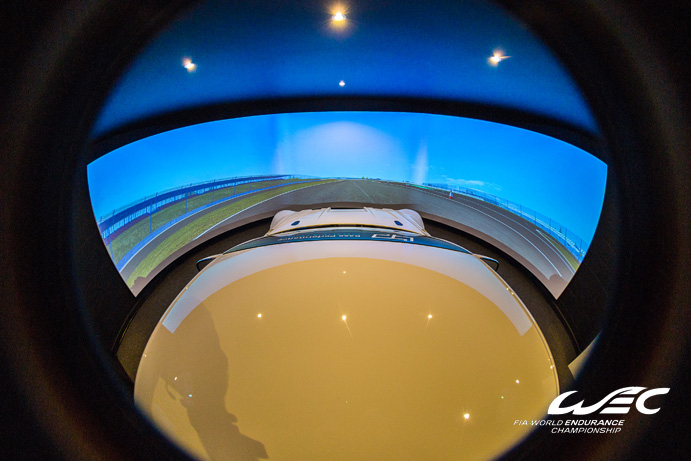

Simulators have come a long way in the past few years and are regularly used in motorsport for both driver training and for engineers to test new ideas in a controlled environment. All of the manufacturers have access to some of the most sophisticated machinery available, with the new Porsche 919 Hybrid being developed on track and in the virtual world simultaneously.
HERE IS A VIDEO ABOUT THE PORSCHE 919 SIMULATOR
The simulators are a big investment and the more complex the systems, the higher the cost. However, there are alternatives for drivers to train on, and Aston Martin works driver, Darren Turner, has his own simulator business, Base Performance, near Banbury which is about 15 miles from Silverstone.
Base Performance has two simulators, a single-seater and a GT, and each has the ability to give a driver the chance to learn new skills and drive any of the 100+ circuits that are currently on the database.
Many race fans will have played on a racing game on, for example, an X-Box or Playstation, but a race simulator is a massive step up, as Darren explains. “Gran Turismo, Need for Speed, they are all driving games. They are great fun and I love them but they are just that – a game. A simulator is a tool, it’s here to do a job which is either to learn a circuit or to hone a driving technique and improve as a driver.”

Darren explained how it all began at Base Performance. “The company was set up for our original client who was a gentleman driver who wanted a simulator at his place in London because he felt he was wasting too much time learning the track when he went racing at the weekend. This is how Base Performance started and it’s grown since then. We have numerous customers around the world who have purchased our simulators and we have got a busy schedule here in Warkworth, near Banbury.
“When the company started it was all about single-seaters,” Darren continued. “My background in simulators was all in Formula One. I was lucky enough to be involved with McLaren, Red Bull and Toyota with all their simulators and I learnt a great deal; what is important and what really isn’t important. Those sims were all focused on engineering work and that’s why they cost a huge amount of money where our simulators are about driver development and circuit familiarisation.
“It soon became evident to us here that, while we had a good client base in single-seaters, there was big market in GT and touring cars – anything with a roof. So we set up a second simulator based on a GT car and we have that in one room and the single-seater in the other. The car model can be anything, you can sit in the single-seater and set it up as a 2CV and sit in the GT sim and drive a Grand Prix car. Each simulator has a 180 degree wrap round screen. As soon as you get behind the wheel your focus is on what is directly ahead of you, so it is very immersive, especially in the GT sim with the roof just above your head.”

Simulators can also allow a driver to learn a track on the other side of the world without leaving the UK and this is also another reason drivers use Base Performance. “We currently have 125 tracks on our database,” Darren continued. “They do vary in quality. The more popular are very high quality and, on the other side, we might have a customer who is going off to a small circuit somewhere in Europe, for example, and he might be the only customer that would ever ask for that particular track. Whatever, we will find something and a solution that will work for that customer; the detail might not be 100% but that is irrelevant for what they would be using it for.
“Our customer base is at every level, from drivers who are just starting out right up to guys who are tapping on the door of Formula One or seasoned professionals in LMP1 or GT racing. We also do corporate days for people who want to try a full on racing simulator.”
So how often does the boss use the simulator? “Not as often as I’d like,” Darren admits. “But that’s a good thing because it means we are really busy. In the height of the racing season we can be running seven days a week and 12-14 hours a day. When I do get to use the simulator it is usually for work on development and trying different things to improve the package.”
A simulator might provide driver training in the virtual world but it can pay dividends in the real world at the track. For more information visit www.baseperformance.net
Jeff Carter
